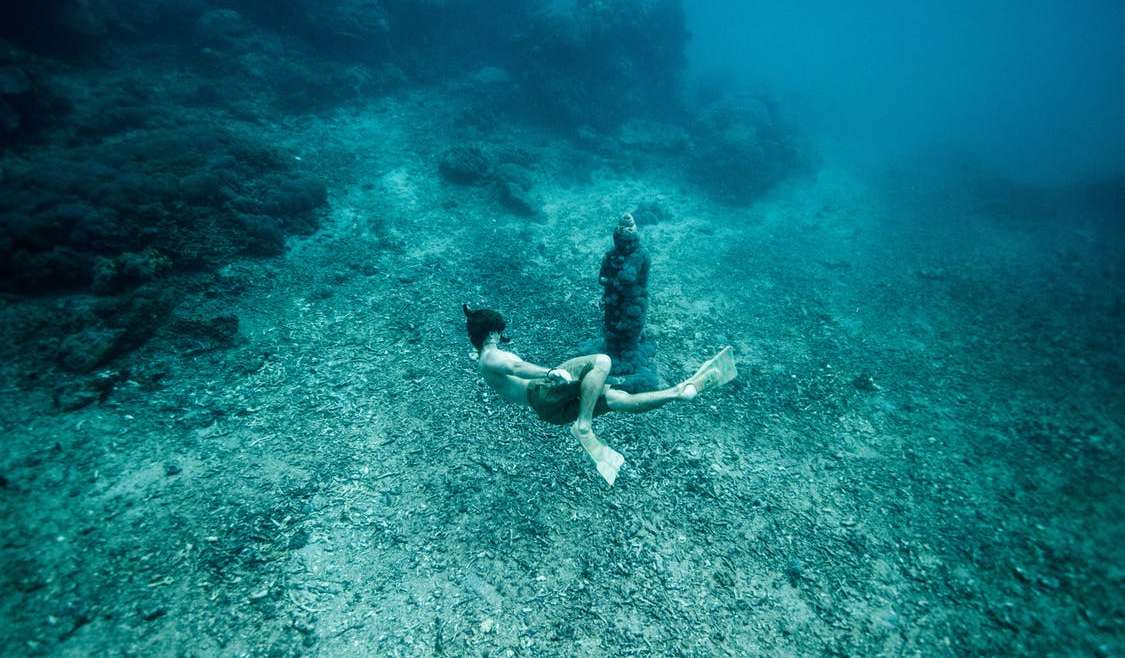Free Diving is fun: AROUND 95% of the world’s oceans remain unexplored.
This is hardly surprising when you think about it: humans have evolved to live on land, and aren’t naturally equipped to reach the deepest sea depths without relying on incredibly high-tech apparatus.
And yet, despite the challenges involved in underwater exploration, some brave adventurers have dedicated their lives to seeing as much of the ocean as possible.
What’s more, they do it without any of the breathing apparatus used by scuba divers.
Free divers simply hold their breath while they dive, experiencing the vast underwater world without having to lug around oxygen tanks or other heavy equipment.
According to professional free diver Christina Saenz de Santamaria,
this is the purest and more exhilarating way to explore the ocean and meet its many amazing inhabitants.
Christina shares her experiences with her husband, fellow freediver Eusebio.
The couple explores the world together, capturing incredible imagery and video footage of marine wildlife that many of us will never see.
We spoke to Christina to learn more about her free diving adventures.
Q&A
Why did you originally decide to become a freediver?
I have always been in love with the ocean since I was a child growing up on the shorelines of Sydney.
While traveling in my early twenties I stumbled across the little island of Ko Tao in Thailand,
where I started to teach scuba diving as a way to pay for my travel and enjoy the ocean.
My passions were quickly ignited once I discovered the sport of free diving at my future husband’s school, Apnea Total.
I quickly became addicted to the pure sensation of freedom in the ocean and the challenge of breath-hold diving.
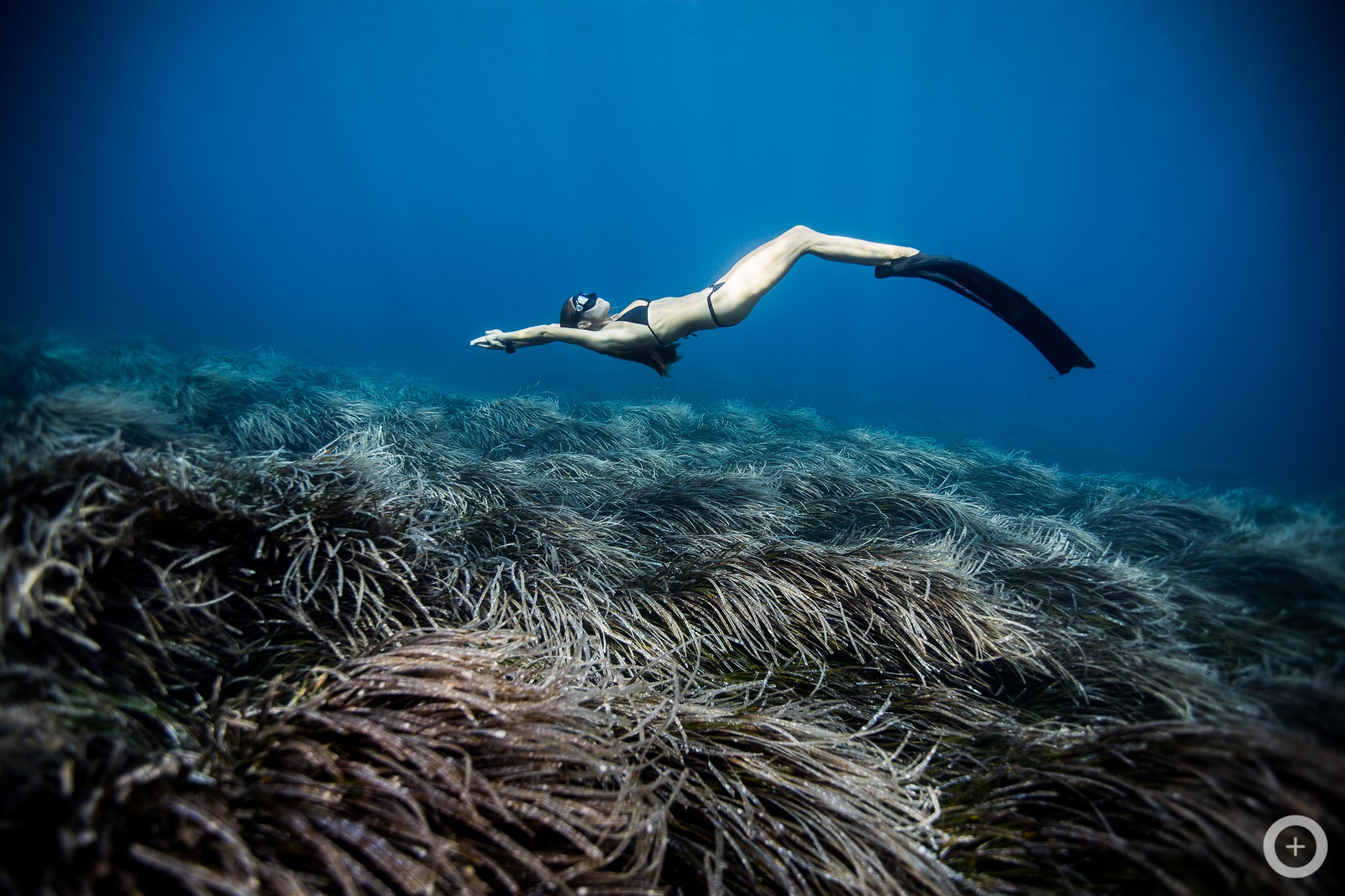
What led you to combine your diving passion with photography and video while Free Diving?
For eight years I have been traveling the world with my husband and trainer Eusebio, exploring the oceans and interacting with marine life from dolphins to tiger sharks.
I’ve always loved photography in all its forms, so combining our experience of freediving, adventure.
And the ocean with photography and video felt like a natural step and an artistic way to communicate the surreal sensations that we feel underwater.
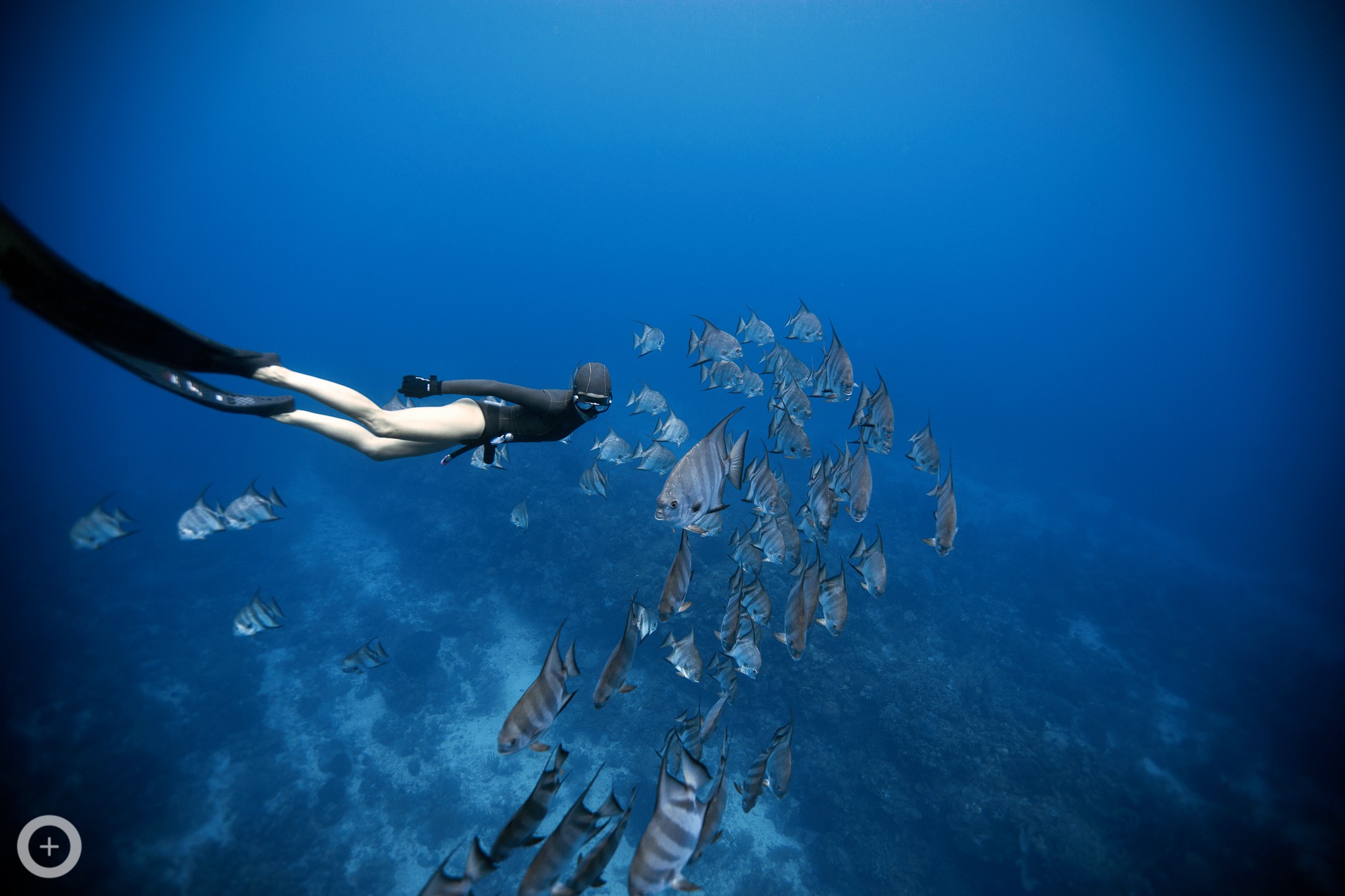
What are the risks associated with free diving in comparison to scuba diving?
If you abide by the safety rules then freediving is one of the safest ocean water sports.
In scuba diving you are relying on equipment that can potentially fail,
whereas in freediving you are relying on and respecting your own body’s abilities.
Among all the rules of freediving, the most important is to never freedive alone, which must be respected at all times.
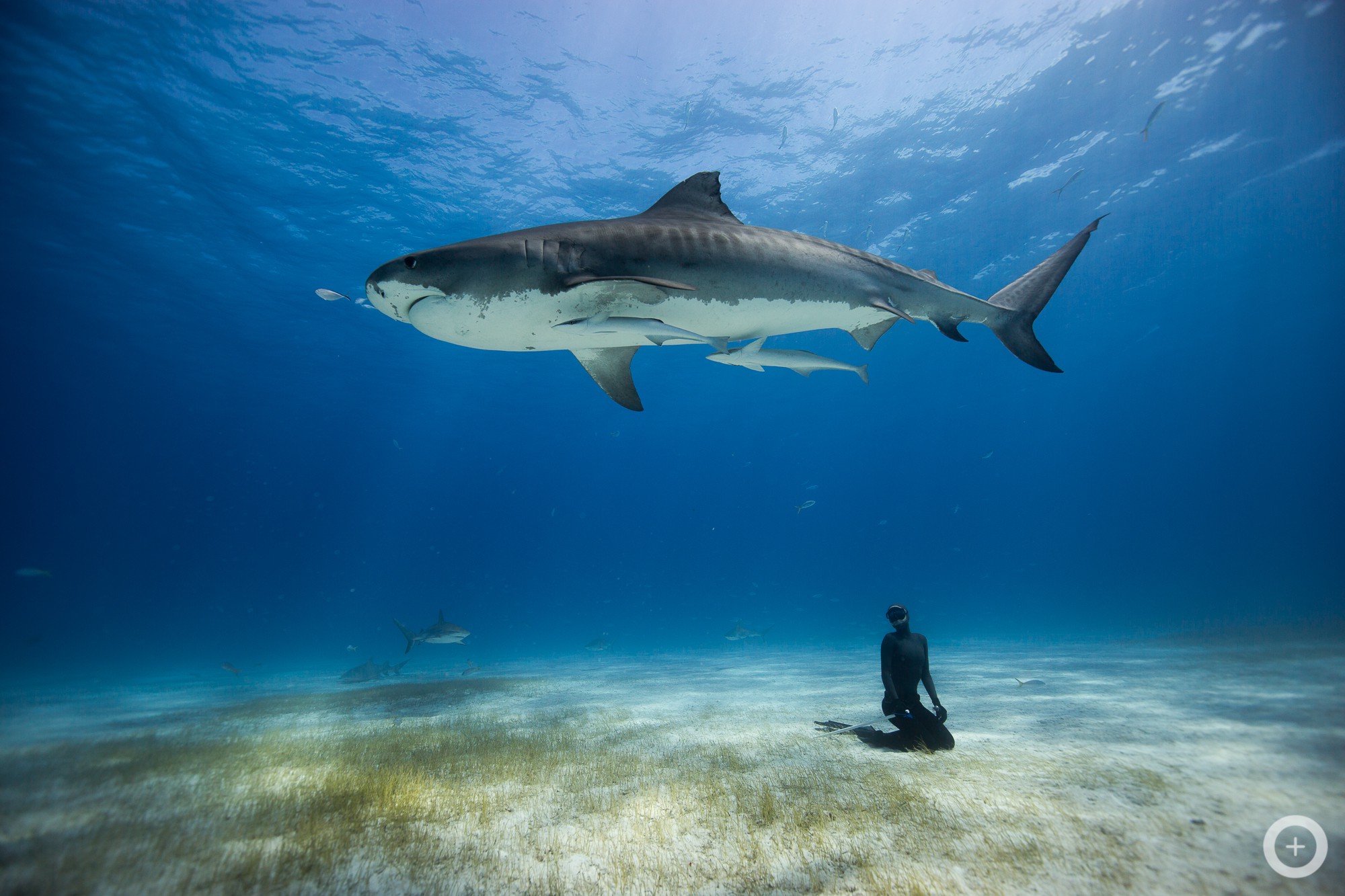
What has been the most dangerous scenario you have encountered during a dive?
Eusebio and I always freedive with respect to our own physical and mental abilities.
We never push ourselves beyond what we are physically and mentally capable of.
So although we have completed very challenging freedives to over 100 metres in depth,
we have never been in danger while training or establishing new records.
In terms of freediving with marine life, this is a different aspect that can be considered potentially dangerous.
Whenever you enter the ocean with large predators such as bull sharks or tiger sharks,
it is essential to be knowledgeable about the species you are diving with and their behavioral traits.
We have a lot of experience freediving with different types of sharks, but we always remember that we have entered their environment.
There is a risk, and we must respect their territory and behavior.
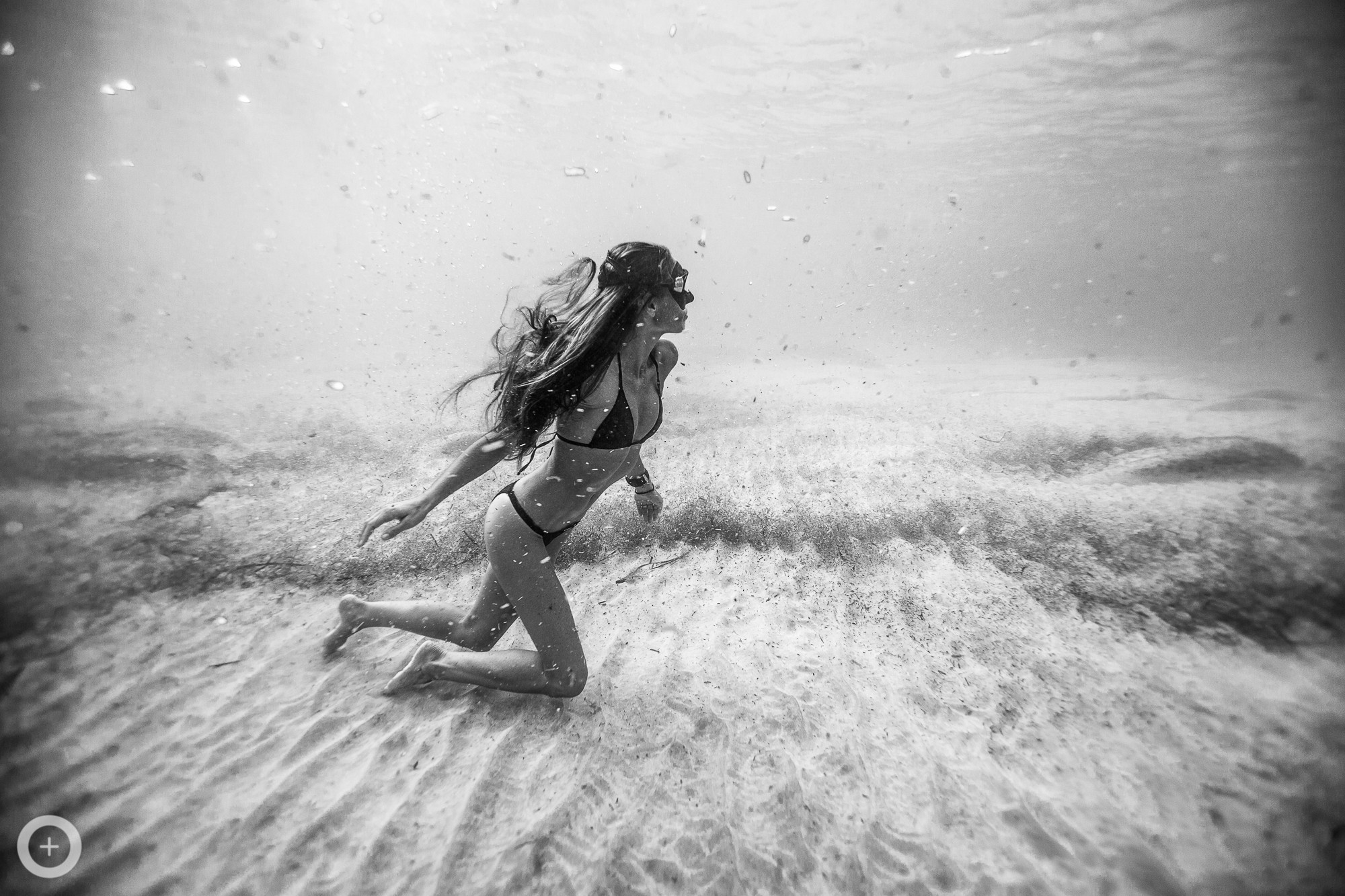
How do you train to become a freediver? Can anyone do it?
Most definitely, yes. Anyone can join a Free Diving world.
We all have the ability to hold our breath locked within us and it takes a knowledgeable and experienced instructor to unlock this potential.
To train to become a freediver you should seek an experienced and reputable freedive center or instructor and take organized freediving education.
That way you can make the most of your freediving potential and learn to freedive in a safe and fun manner.
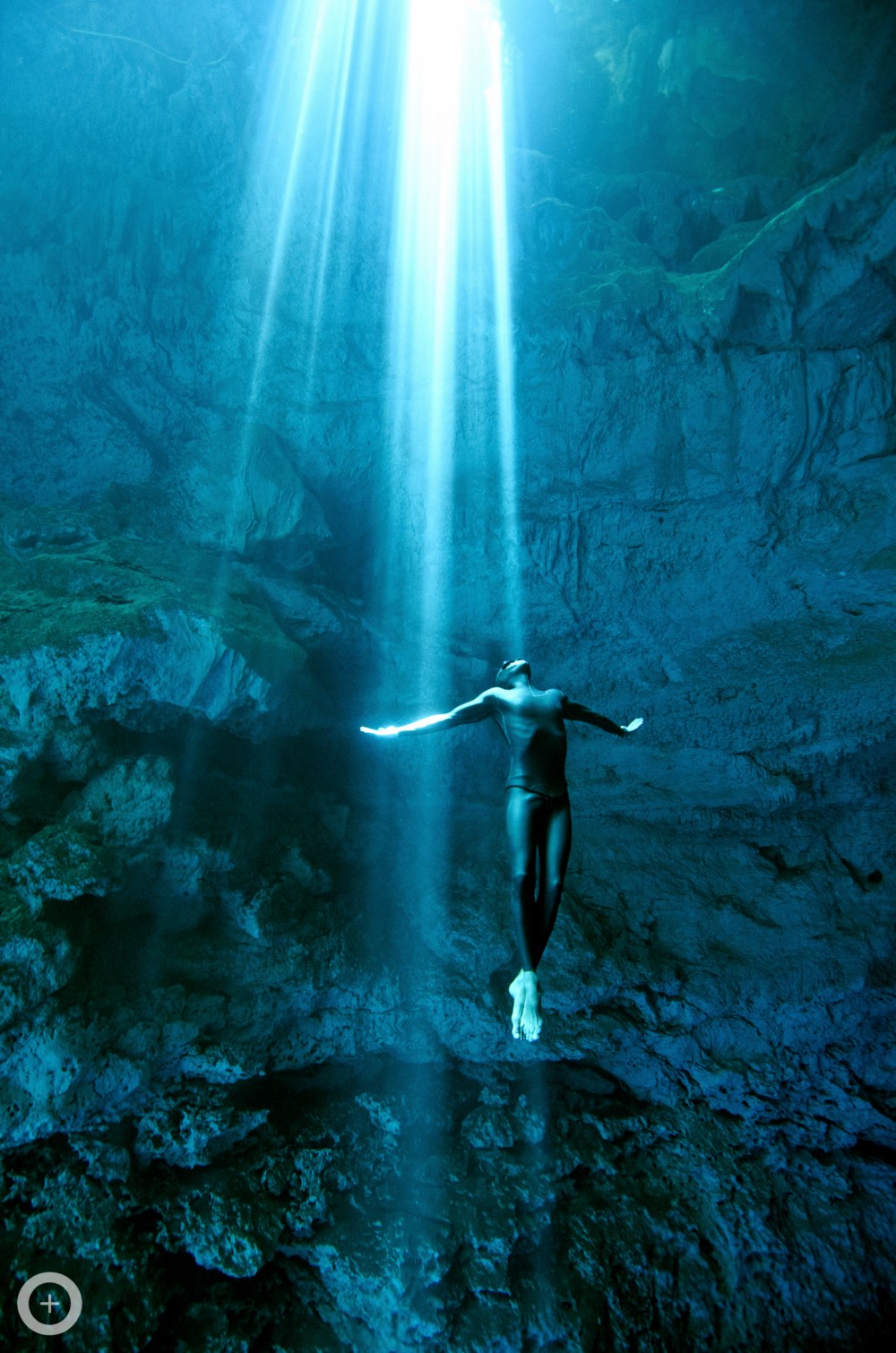
How important is it for you to share your adventures with Eusebio?
It is very special to be able to share my freediving experiences with my partner.
To have a passion that we love together is simply very cool.
We are able to plan all sorts of imaginative underwater adventures that sound crazy to other people.
Where are some of the most spectacular places you have dived?
I have free dived in many incredible areas of the world, which are all special for different reasons.
At Tiger Beach in the Grand Bahamas, we experienced freediving with six mature female tiger sharks, each between 10 and 14ft in length.
At the Cenotes of the Yucatán Peninsula in Mexico, the striking cathedral light and otherworldliness of the natural sinkholes was surreal and magical.
Freediving with the resident spinner dolphins off the coast of Kona on the Big Island of Hawaii was also amazing.
These dolphins were incredibly fun, playful, curious and highly intelligent.
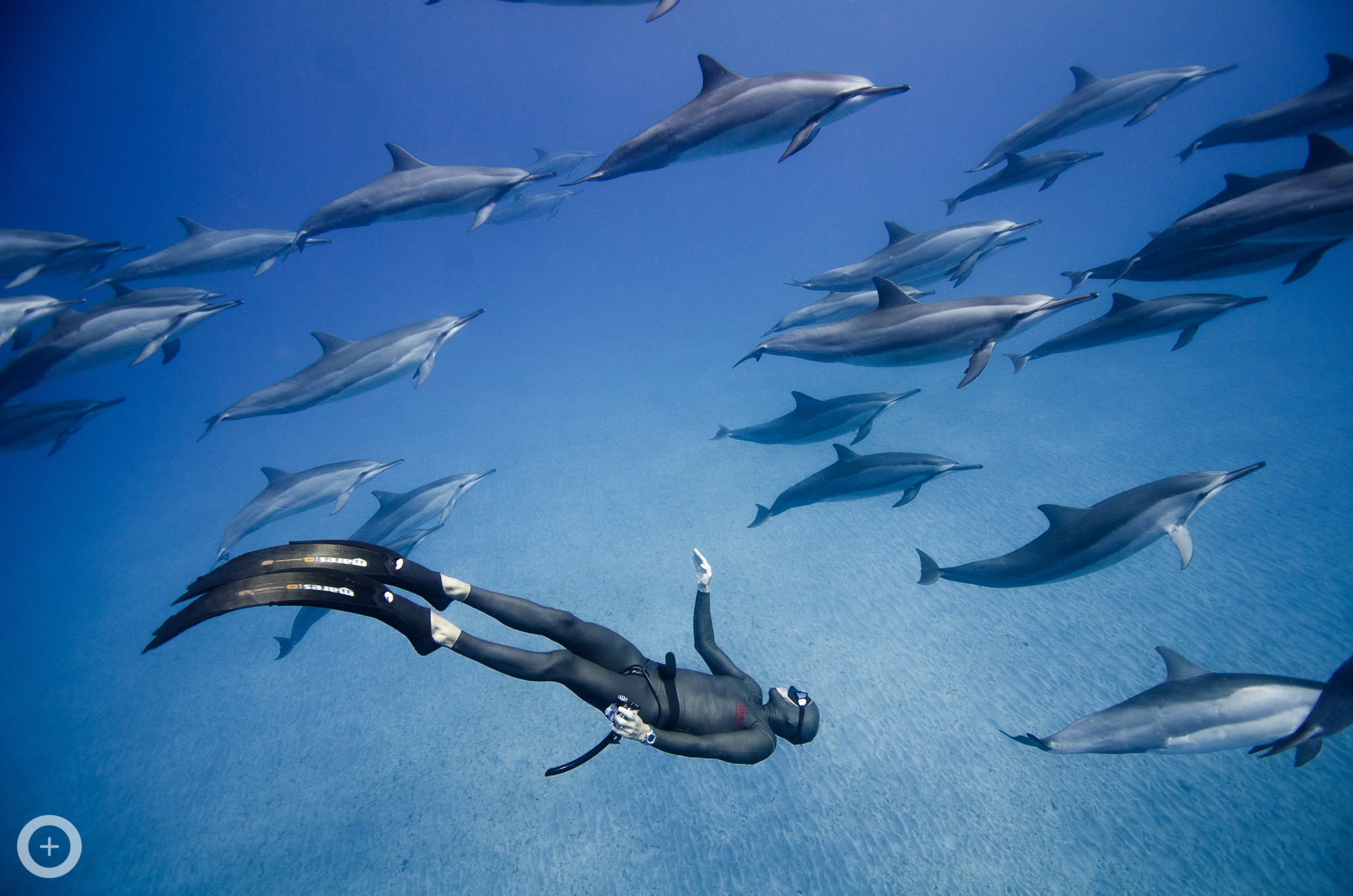
Which of your photographs are you most proud to have taken?
Any photograph that touches a viewer, that makes them experience the surreal sensations that we do underwater and encourages them to enjoy the ocean, is a photograph that I am proud of.
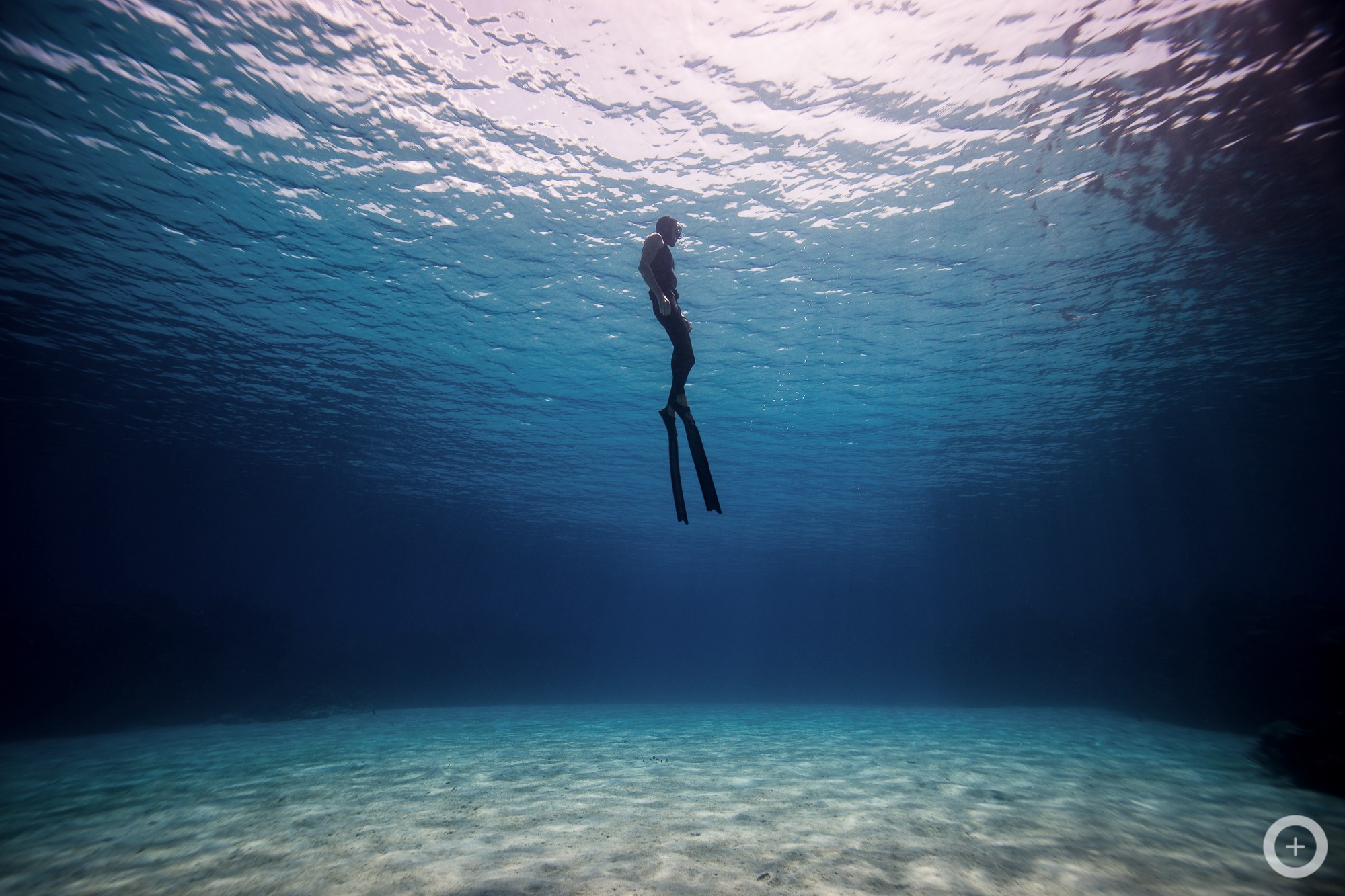
Which animals do you most enjoy seeing during your dives, and which are you most nervous to encounter?
I have fallen in love with sharks, particularly the tiger shark.
To experience freediving eye-to-eye with a 14ft tiger shark is exhilarating — they emanate incredible power and a sense of tension.
I have heightened sensations and awareness when swimming with these animals, although I would not use the word nervous to describe it.
My senses are peaked to be aware of any animal behavioural changes.
I feel thrilled by their energy, but also ready to respond to any potential danger and retreat to the boat if necessary.
Although we are not deliberately on a shark’s menu, these are animals that act on pure instinct, and this is a fact that we never forget.
Freediving with the six large tiger sharks in the Bahamas has definitely been the highlight of my underwater wildlife encounters.
Looking directly into their cold, black, instinctive eyes was a life-affirming and informative experience.
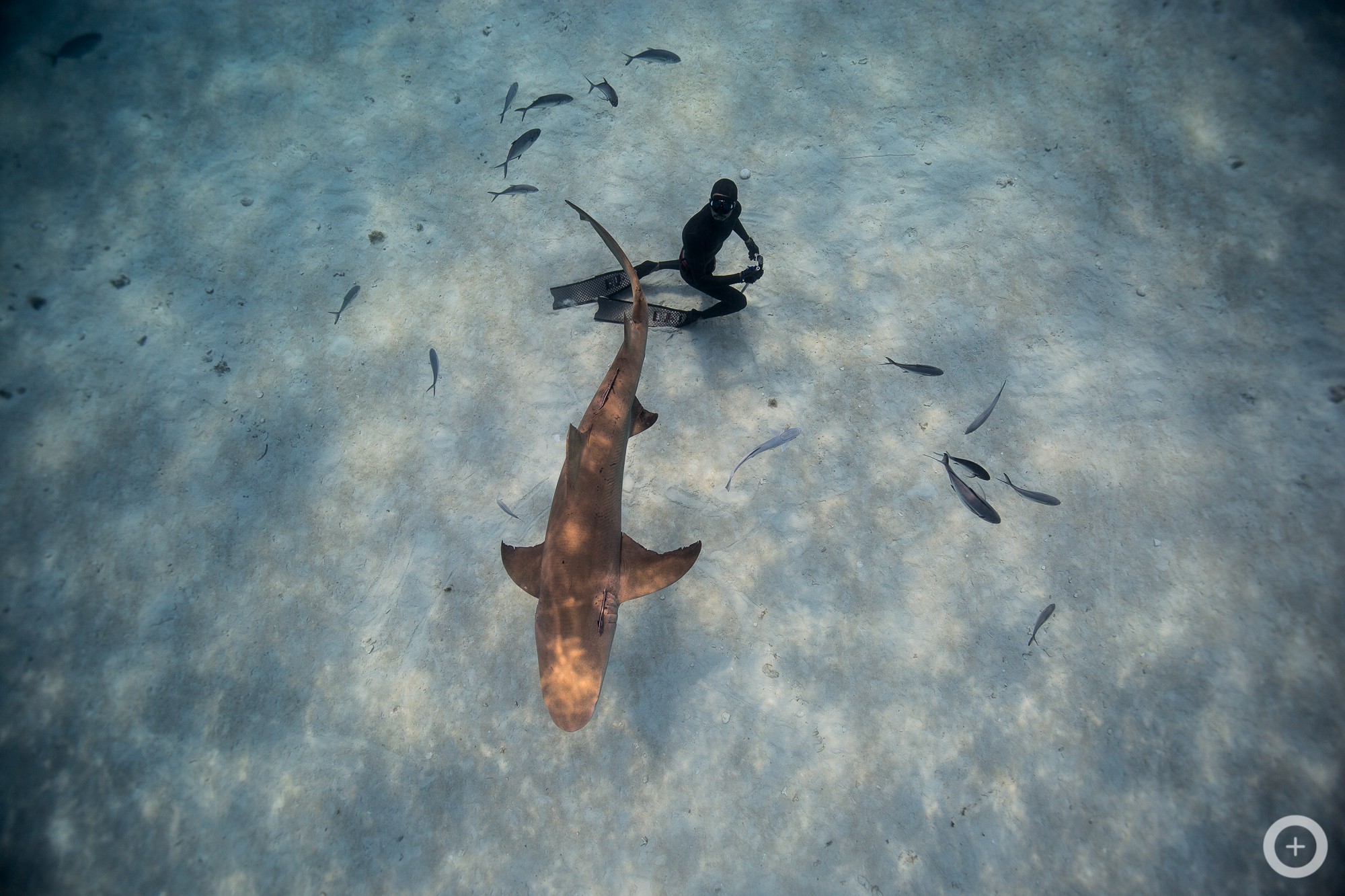
How would you describe the feeling of being deep in the ocean without any breathing apparatus?
Pure freedom, and a purer experience than scuba diving. Marine wildlife can be very inquisitive of you without the noise and distraction of the equipment.
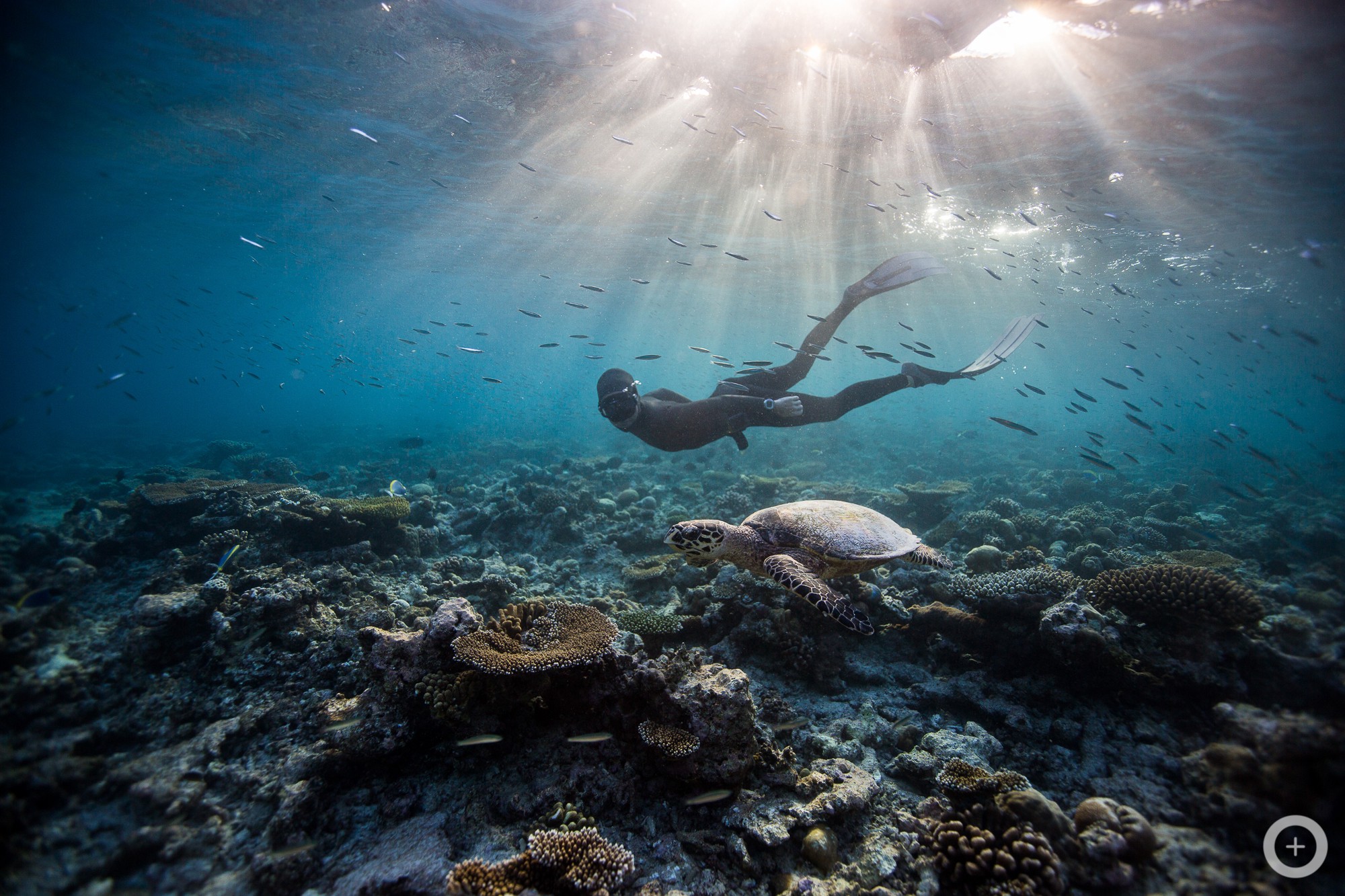
How concerned are you about the destruction of ocean habitats due to global warming and pollution?
Oceans are being affected immensely all over the world.
Living in Southeast Asia for 11 years, I have witnessed an enormous amount of plastic and non-biodegradable waste polluting the oceans, particularly during monsoonal weather.
The amount of plastic pollution is overwhelming at some points of the year, and of course this is something that concerns me immensely.
I have also witnessed destroyed coral reefs due to dynamite fishing and declining fish populations in certain areas due to over fishing.
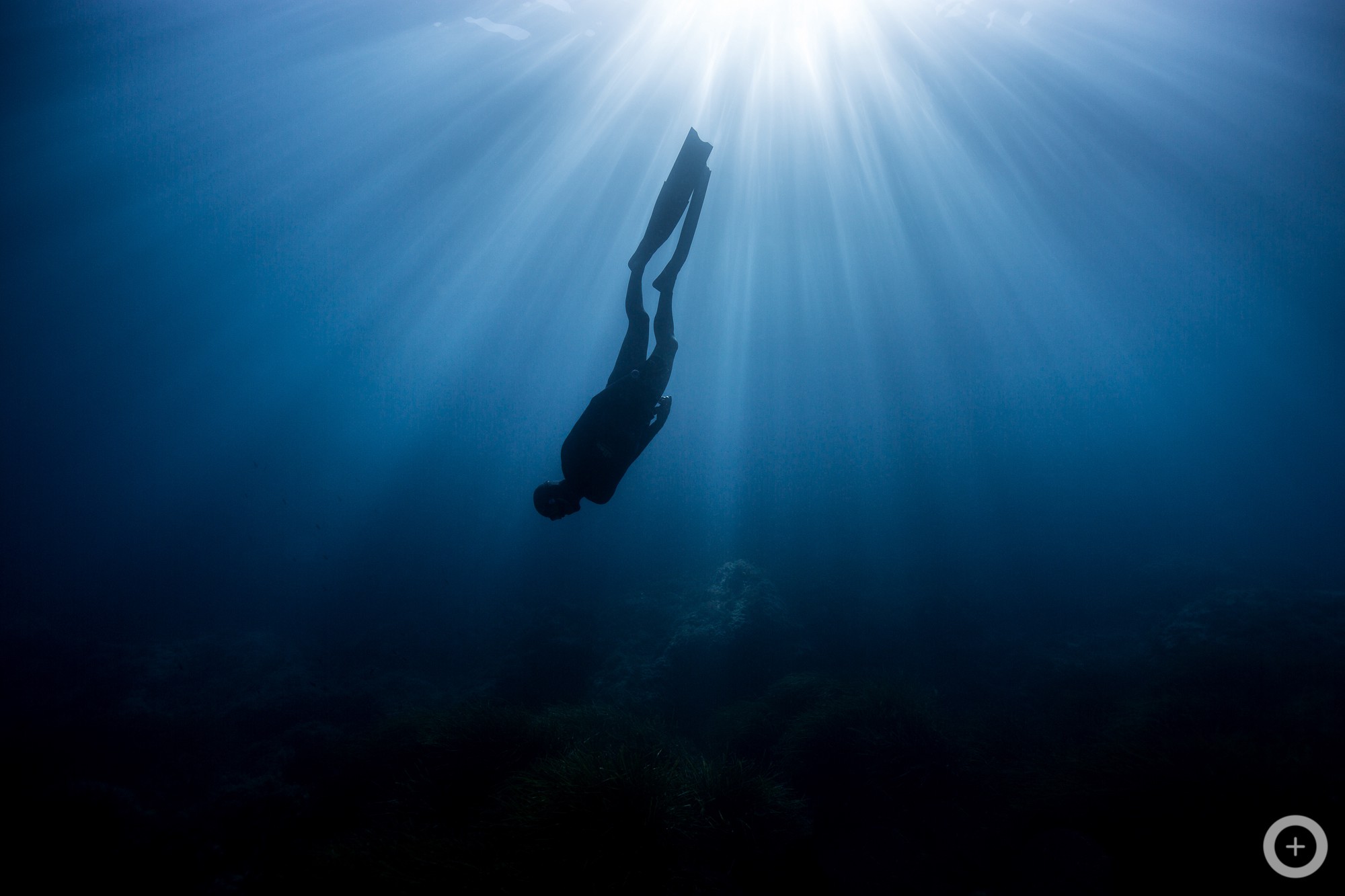
What can people do to ensure that they do not cause further harm to these special underwater environments?
Be aware of where they deposit their rubbish and choosing biodegradable packaging over non-biodegradable, as well as purchasing fish products from companies or fisherman that employ sustainable fishing practices.
Learn more about Christina and Eusebio’s travels on their website: www.oneoceanonebreath.com.
